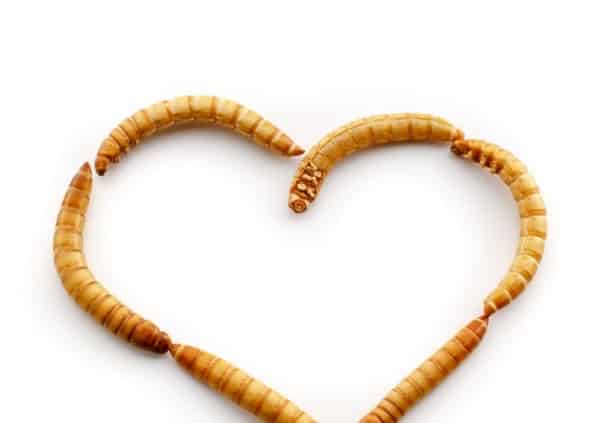How Do I Raise Mealworms at Home?
Have you ever considered raising mealworms at home? Mealworms are a great supplement to feeding your backyard chickens or to be fed to reptiles and wild birds. Thankfully it is cheap and easy to raise them at home! For the cost of a small container of mealworms you could instead set up your own colony.
What are Mealworms?
Mealworms are the larval form of the mealworm beetle, which is a type of darkling beetle. The beetles lay eggs, which when larger can easily be fed as a yummy snack to your reptiles and birds.
Container
A small Tupperwear container will work well for homes with a handful of backyard chickens. If you have more chickens you may choose to get a larger container or multiple small containers. A normal cheap container will work great. It does not have to be airtight but it does need to have a lid. In Colorado we have an issue with small moths getting into food and they will destroy a mealworm colony, so you need to ensure they cannot get into the container. I tried a 3 level system but the moths were able to get in right away. I also tried putting netting over the container but it was a hassle to deal with when I needed to get into the container to feed or collect the worms. After I got my container I lined the edges of the container and the inside of the lid with double-sided tape to ensure the moths would get stuck when trying to climb into the container.
*** Edit note: During humid times I started to have a problem with the bedding molding when the lid was on. I switched to putting a screen over the top of the bin, attached with either double-sided tape or a large rubber-band, which eliminated the humidity problem.
Bedding
You can use a variety of bedding types but the one I have found that works best is wheat bran. It is inexpensive and easy to find. I purchase my wheat bran at Sprouts for 99 cents a pound. After I get a couple of bags I put them in the freezer for at least two weeks to make sure any insects in it are killed off. Then it is ready to be used! Mealworms will need at least a couple inches of bedding but it does not have to be deep.
After your colony is established you will want to change the bedding out when needed. I change mine about every 3 months, but you may find the need to change it more or less often. Check your bedding every month or so as the fecal matter (a very fine particle) can be mistaken for bedding unless you look closely. When you are ready to change the bedding, filter out the fine waste particles from the wheat bran, beetles and worms. Use this time to dispose of any dead beetles and clean out any food remnants. But don’t throw away the waste particles just yet! Set them aside for a few weeks to allow any eggs to hatch. Add the tiny worms to your colony and toss the waste.
Starter Worms
After you have your container and bedding you are ready for your worms! You can purchase them in bulk online or just go to your local feed supply store. Most places sell 50 mealworms for around $5. I started my colony with around 80 worms and it took off quickly! If you happen to know someone who already has a colony see if you can get a cup of worms, beetles and bedding from them to give your colony a jump start. The bedding will most likely contain eggs and will get the process moving quickly.
Food
The mealworms will eat the wheat bran bedding but they also need a food source that contains moisture. I typically give mine lettuce because it is easy and they seem to like it best, but other foods like watermelon rinds, apples and potatoes would work. Be sure not to let moist foods lead to mold in the wheat bran, so if you are using a very moist food put down a piece of thick paper first to keep the moisture from the bedding. The worms may eat through the paper but it will not hurt them – it was discovered in 2015 that mealworms can degrade items like polystyrene so a little paper will not make a difference.
Time Frame
A typical colony takes about 6 months to get up and running. Give your worms time to propagate before taking some out for feeders. If you keep the balance of beetles and worms, feed them regularly and change their bedding and you will have a wonderful food source for your chickens, birds and reptiles for years to come!
Learn More!
If you want to read more tips and tricks follow our blog and subscribe to our YouTube channel for regular videos!







Leave a Reply
Want to join the discussion?Feel free to contribute!